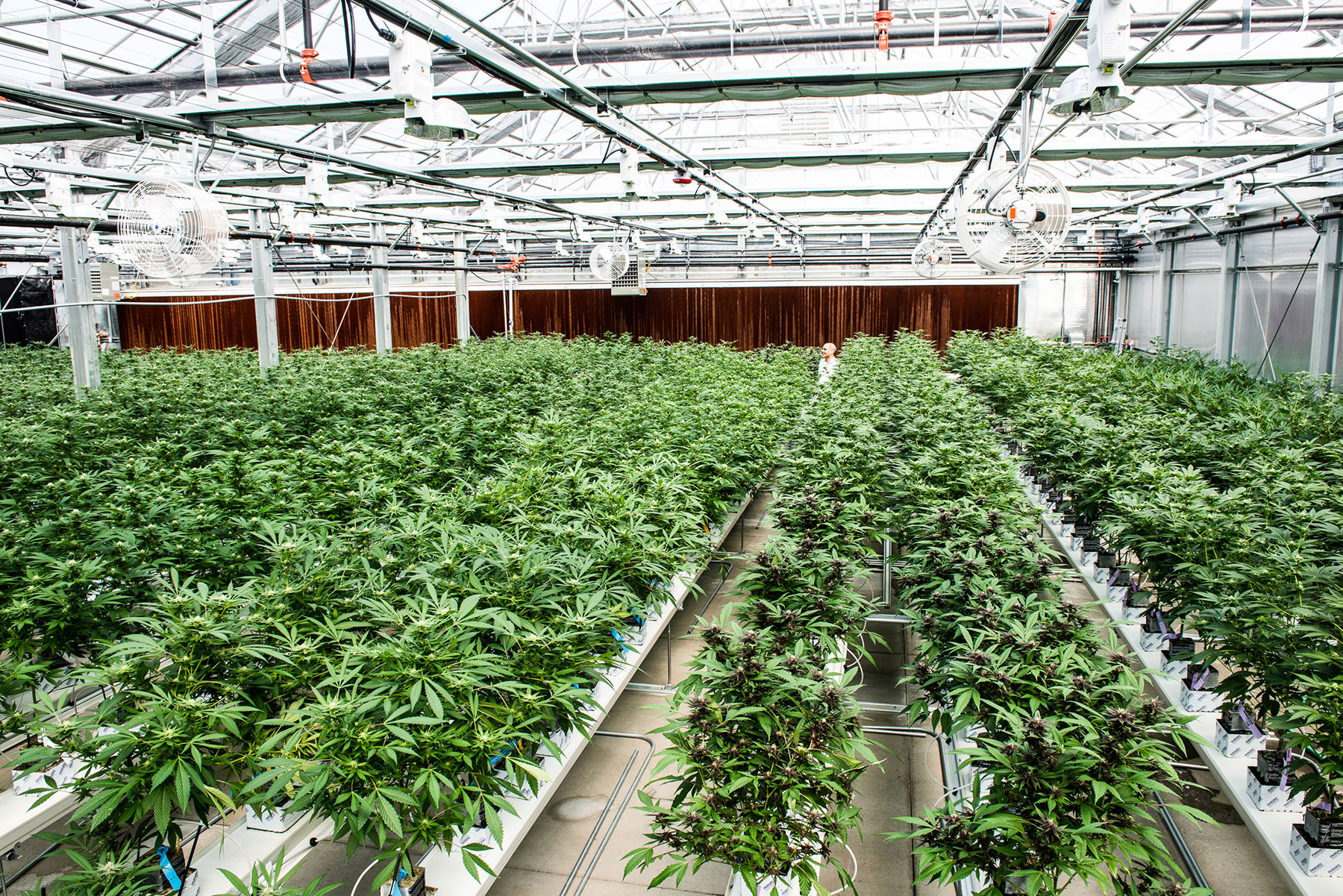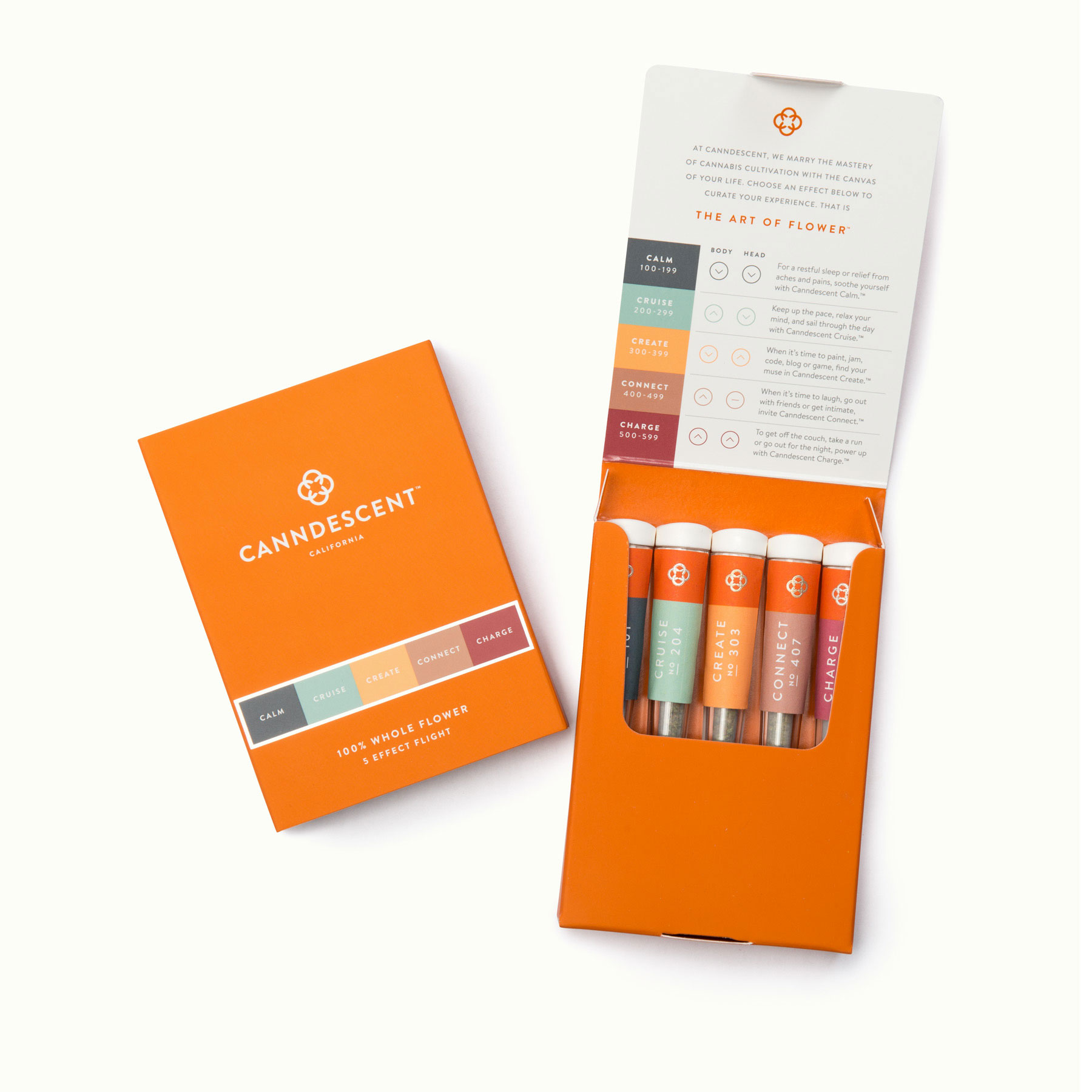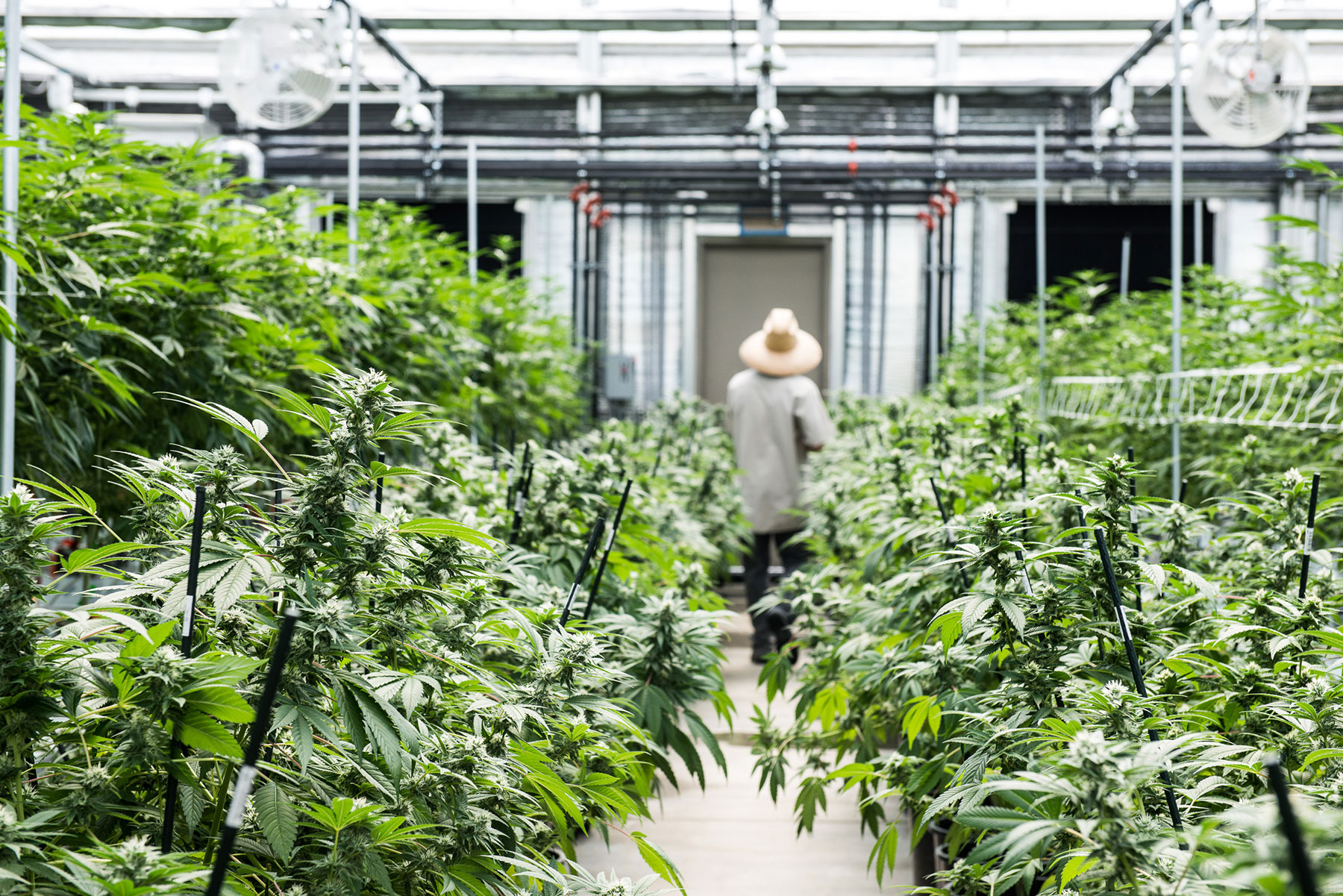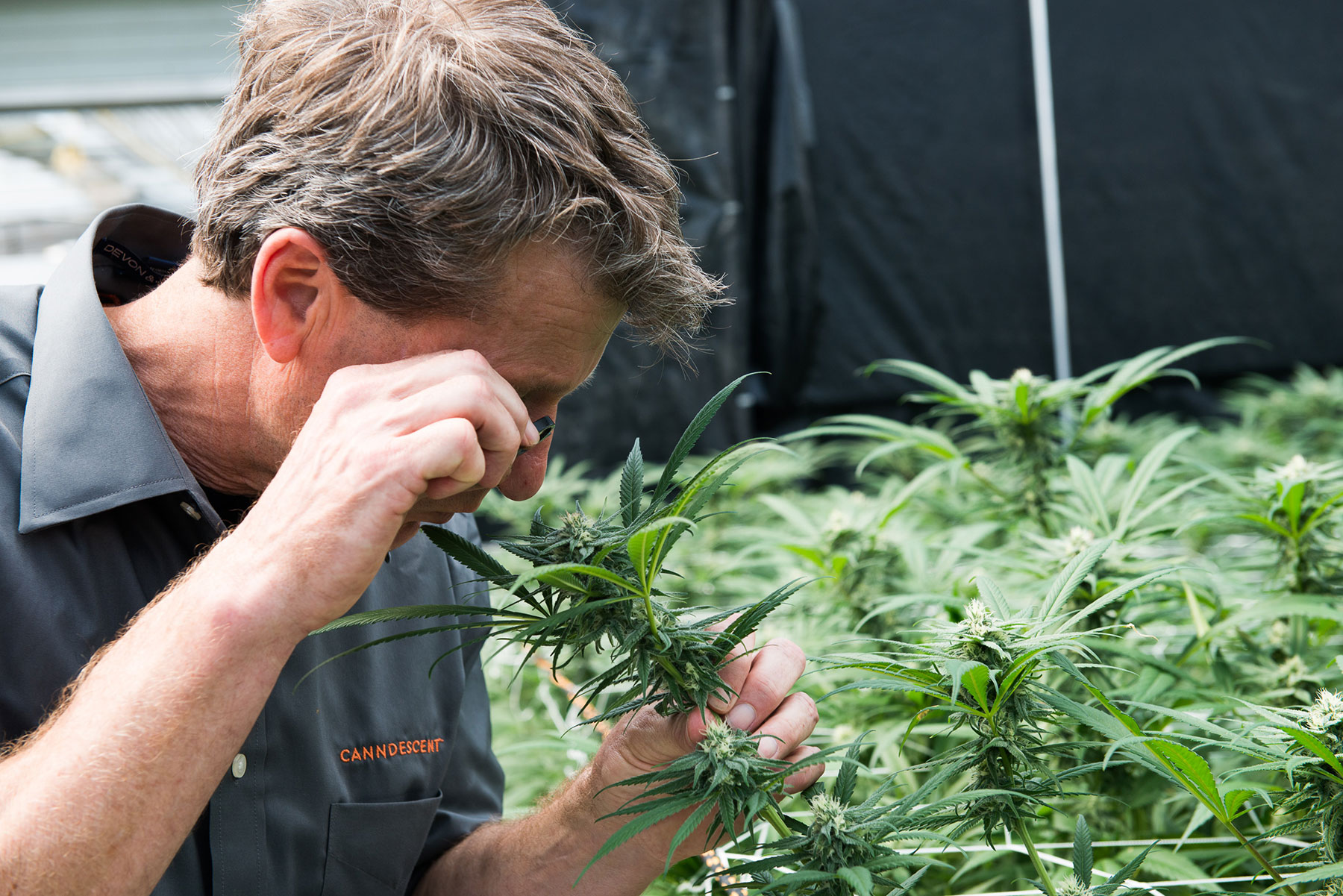Touring Canndescent, the Hermés of Cannabis
By: Casha Doemland
Did you know that Palm Desert approved 35 applications for cannabis-based businesses in December 2017 and that 5 grows have already begun construction?
I didn’t, and it wasn’t until I arrived at the gates of Canndescent, which is well tucked away and rather inconspicuous except for a sign with their name on the top right corner of the building, that I realized the cannabis industry was in fact, booming out here.
Canndescent has a whopping 75,000 sq ft dedicated to growing, harvesting and packaging cannabis across multiple facilities and a massive greenhouse in Palm Desert. Combined, they produce roughly 1,500 pounds of cannabis every month. That’s a lot of cabbage.
As I approach the gate, I see a well-armed guard make his way out of the booth to greet me. I check in, exchange pleasantries and make my way down the side of the building where I’m escorted inside. The moment the door opens, a gust of cannabis hits my nose, reminding me of the times I'd catch my friends hot boxing in their cars at the old park in high school, and I know I'm in for a treat.
I meet Rick Fisher, COO of Canndescent. He and Canndescent founder Adrian Sedlin had tried working together for years, but nothing stuck. "[Adrian] retires for six years and comes to me with the idea for cannabis,” Rick says, “which didn't sell me at first. Now, my goal is to glorify cannabis because it's been vilified for so long."
Rick takes me through the first facility and supplies a brief rundown about each process. “We’re a tech-heavy facility, which is one of our biggest differentiators. By utilizing technology, we alleviate human effort,” adds Rick.
Each of the rooms is connected to sensors, which allows everyone who works there to view the air temperature, PH level, humidity, day count, water temperature and CO2 levels on a screen outside the door.
As we enter the “Mom & Veg” room, I immediately notice that it’s divided into two stories, then sections. On the first floor, I see a gentleman with longish hair, happily cutting the mom plant at a 45-degree angle approximately 3 nodes from the tip. “After a cut is taken, it will stay in a ‘clone dome’ for 7-10 days until it has rooted,” states Rick. “Once rooted, it gets shifted into a 4X4 block of Rockwool and starts its vegetative process. It will be under 18 hours of LEC light for approximately 20 days before moving into a flower room.”
The next few rooms are viewed through a square glass window on the door, beginning with the flower stage, then moving on to dry and cure, trim, and lastly packaging and distribution.
We walk 50 feet over to another building, and before entering, Rick points out the air conditioning unit, powerful enough to cool 120 single family homes or a large hotel but are essential due to the amount of heats lamps placed throughout the indoor grow facility.
Once we step inside, we take a look at some plants that are roughly halfway through their 60-day growing cycle. The heat lamps begin hot and are slowly cooled while ductsox are used over running vents to disperse air throughout the room. Large fans are placed above those ductsox to create airflow so that CO2 doesn’t sit idle in the room. In the winter, because the desert is so dry, they actually have to put humidity back into the room with a fogger.
After ogling at flowers for 5 minutes— and gawking at the sheer just the amount of cannabis in front of me—we step into the dry and curing room. Here, the flowers are cut by hand and the stem is deboned, placed in waste containers to be destroyed in compliance with regulations. Curing is a very important part of the process, and in order for a flower to achieve its best smoke-ability, it needs to sit for a while.
We make our way to the trimming room where everything is weighed by grams and then separated into fine trim, big nug, or small flowers that aren't visually presentable or sellable in the jars. "Our trim and packaging teams are trained to not touch the flower," shares Rick. "We trim by holding the flower stem (not the flower) and use gloves and automation to help jar and package our flower. In short, the beauty of the trichomes and structure of that flower is what we have worked so hard to present to you, so we do our best to preserve that experience."
After trimming comes the last stage, packaging and pre-rolling. The corner room is filled with people, each partaking in a different job. I watch a woman prepare pre-rolls with a machine that typically packs 50 at a time. There were more joints in that room than Cheech and Chong had seen in their lifetime. Watching the whole process unfold, you are struck not only by the great deal of attention and detail that goes into every package but at the concentrated efficiency at which the cannabis flows through Canndescent’s burgeoning industrial framework.
“Up until our launch, no one knew where their flower came from, whether or not the grower was using harmful pesticides, and consistency was not part of the experience,” begins Rick. "Our packaging allowed us to present our product in a high-quality glass container. And consumers quickly learned if you bought the orange box of Canndescent flower once, you knew who the cultivator was and could find that same experience again."
We hop in Rick’s car and take a quick drive down the road to the greenhouse. Upon entering, we have to put on booties to avoid cross-contamination. Since the greenhouse went live in January, a majority of the rooms outside of the greenhouse itself, have yet to be completed.
As this is an outdoor facility, Canndescent is required to have custom mist for odor control as part of the local ordinance, a valid enough requirement, as you don’t want that half of Palm Springs to smell like on-site camping at Coachella.
According to Rick, there are still grows that use pesticides, but Canndescent has an Integrated Pest Management (IPM) team that feeds the garden bugs sporadically throughout the process, leaving no pesticides on site. “Canndescent is only putting out clean product, we’re not worried about the cost,” says Rick. "That’s why our brand is premium. It’s worth it.”
Cannabis is a finicky thing to grow, and Canndescent maintains tight environmental control in all of the flower rooms to ensure the customer is getting the same thing every time. “When Calm 101 is grown, it is grown with the same light, fertigation schedule, light cycle and duration in the flower cycle,” elaborates Rick. "Once harvested, it is tested for its cannabinoid and terpene profile to make sure it lines up with our expectations. If for whatever reason it doesn't line up, that product is not packaged and sold as Calm 101."
It's safe to say, I've never been around this much cannabis in my life – walking through rows of plants, smelling flowers, and getting the full rundown of how the Hermès of Cannabis is revolutionizing the industry was a phenomenal experience that any stoner worth their weight in bong smoke would love to see up close and personal. Imagine standing on one end of a greenhouse where 600 pounds of cannabis is produced monthly, looking down at row upon row of plants varying in strain and sometimes even color. I couldn’t help myself from stuffing my nose into a bag of Cruise 201, inhaling those magical earthy tones, while low-key making a note to self that this is the strain for me because the nose knows.
Unfortunately, due to strict regulations, samples are forbidden as each ounce is accounted for, including the discarded stems and waste. So, just like all of you, I’ll have to find it at my local dispensary. Still, I spent the afternoon expanding what very little knowledge I had of the cannabis world and smelling a wide, intoxicating variety of strains, a strange opportunity given the fact that if I was caught crossing the state line into Arizona carrying more than four pounds of this stuff, I’d be locked up for twelve and a half years.









